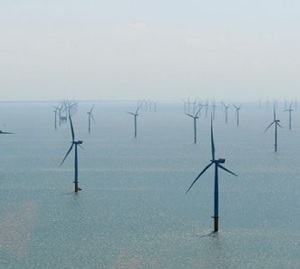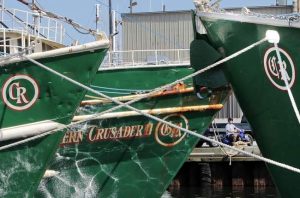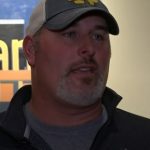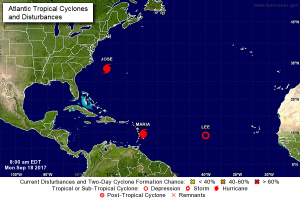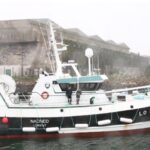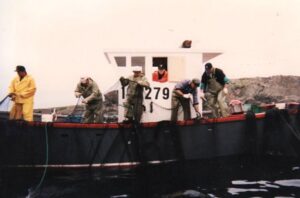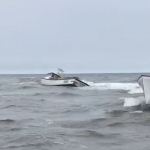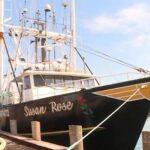Tag Archives: Block Island Wind Farm
Supporters, Opponents of Offshore Wind Both Look for Hopeful Signs in Trump Administration
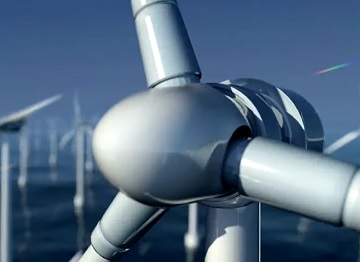 On the day after the elections last week, and even before, the airwaves were crammed with speculation about how this, that, and the other sectors of American life and the economy would fare under a Trump administration. The chatter included the future of offshore wind, which was born in the United States in 2016 off the coast of Block Island and continues to generate heavy support and heavy opposition. President-elect Donald Trump has expressed hostility toward offshore wind and has said he would put an end to the industry “on day one” of his administration. Trump-supporting Republicans have vowed to put an end to President Joe Biden’s 2022 Inflation Reduction Act, including tax credits for big projects such as offshore wind. A large share of the IRA’s $891 billion price tag is targeted toward renewable energy and related technologies. more, >>CLICK TO READ<< 07:53
On the day after the elections last week, and even before, the airwaves were crammed with speculation about how this, that, and the other sectors of American life and the economy would fare under a Trump administration. The chatter included the future of offshore wind, which was born in the United States in 2016 off the coast of Block Island and continues to generate heavy support and heavy opposition. President-elect Donald Trump has expressed hostility toward offshore wind and has said he would put an end to the industry “on day one” of his administration. Trump-supporting Republicans have vowed to put an end to President Joe Biden’s 2022 Inflation Reduction Act, including tax credits for big projects such as offshore wind. A large share of the IRA’s $891 billion price tag is targeted toward renewable energy and related technologies. more, >>CLICK TO READ<< 07:53

A Letter to the Editor: Wind farm utility causing onshore problems
New England has regional noise/vibration problems since the Block Island Wind Farm started. Indeed, one could note, regional wind turbines no longer typify “green energy.” In addition to air storage batteries being secretly installed on Beavertail in Jamestown to facilitate retention of unpredictable wind power, the regional power grid has been secretly raised to a higher power level to capture more irregular wind power for investors. However, that higher grid power has caused widespread environmental pressure, including water and sewer pipe separations, gas line issues and vibrations. Yards, floors and in-house glass vibrate. Light bulb filaments and wall clock parts have separated. >click to read< by Donna Cameron Gricus, Jamestown, R.I. 14:47
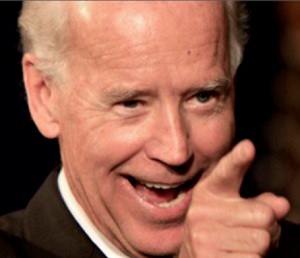
Biden’s Offshore Wind Farm Target Will Increase Costs, Reduce Reliability
Congress passed the first temporary production tax credit for wind in 1992 and extended it 13 times since then. The Democrat’s reconciliation package contains about $235 billion in incentives for wind and solar,,, The reconciliation package Build Back Better would make the PTC and investment tax credit direct payments, instead of a tax credit against any taxes owed. That is, renewable energy developers would receive a check from the government for the subsidy. Further, solar, which has long qualified for an investment tax credit but not the production tax credit available to wind, would now qualify for both. The legislation would also restore the PTC and ITC to their original values as follows: >click to read< 14:41
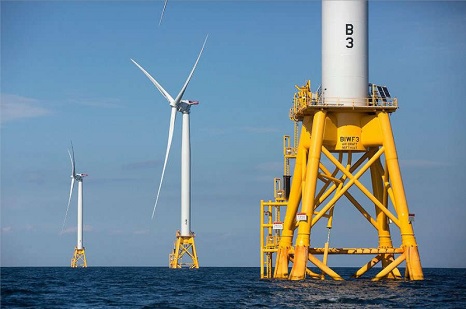
Bad Press for Block Island Wind Farm! The blades ain’t turning, questions of cables, and huge $$$ extra’s!
The Block Island wind farm has largely shut down – And so I can understand why no one wants to talk about how four of the farm’s five turbines have, without any public notice, stopped running this summer. I spent the better part of a week trying to learn why, It was an unsatisfying explanation. More troubling, the reburying of the cable, The last estimate to rebury the cable was $30 million, I can understand why Ørsted and the other wind company contenders jockeying for new development up and down the Eastern Seaboard might be worried about bad press for the Block Island system, given the growing opposition to wind farms from the fishing industry, consumer activists and coastal communities where cables are proposed to come ashore. Thank you for the exposure, David Collins! >click to read< 12:58

‘Free’ Offshore Wind Farm Power Costs Six Times the National Average Cost of Power in USA
Americans are fast learning that the cost of wind power is staggering, and the cost of offshore wind power is astronomical. Joe Biden and his Squad are eager to plant thousands of these things up and down the Atlantic coast, claiming that offshore wind power is ‘free’ and getting cheaper all the time. It’s a myth, to be sure, as Willis Eschenbach carefully details below. Block Island Wind Farm – And what are the economics of the Block Island Wind Farm? (insanity!) How much is that energy worth? The nationwide average to the customer is around 13 cents/kWh,,, And how much is Rhode Island paying for this “inexpensive” wind energy? Hang on to your jaw so it doesn’t hit the floor … they’re paying 24.4 cents/kWh, six times the national average, and it’s going up by 3.5% per year … so in ten years it will be 34.4 cents/kWh. But wait, there’s more.,,, Oh, plus the surcharge to pay for the transmission cable,,, >click to read< 09:54
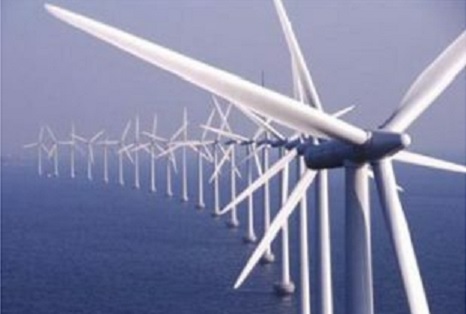
Nature is not a Whore!!!
We have incredible fishing grounds on our East Coast!!! Why destroy a renewable sustainable Resource??? Molesting these grounds by dumping massive amounts of construction materials on them is insane!!! Keep in mind the many rules the EPA has against ocean dumping!!! Not to mention the likely hood of them turning into a Dumping Ground after they become useless… Out of sight out of mind!!! What wonderful habitat the Turbine bases will make for the Green Crabs ocean Locust!!! We can’t forget about the Whales… The European Wind Farms do not see a significant Whale migration… What aren’t they saying??? >click to read< 09:41
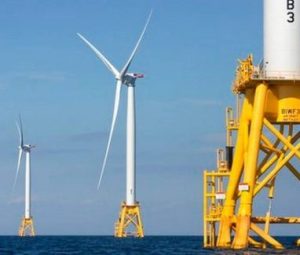
Renewables and unions: Biden rounds out energy Cabinet
President-elect Joe Biden closed out his Cabinet picks last week with the choice of Rhode Island Gov. Gina Raimondo (D) for Commerce secretary and Boston Mayor Marty Walsh for Labor secretary,,, Offshore wind insiders say Raimondo appears to be an answer to the growing friction between a burgeoning renewable sector and the fishermen who have long been the ocean’s dominant users.,, Raimondo would oversee NOAA Fisheries, a critical gatekeeper to the growing line of offshore wind projects awaiting approval from the incoming Biden government. >click to read< 17:08
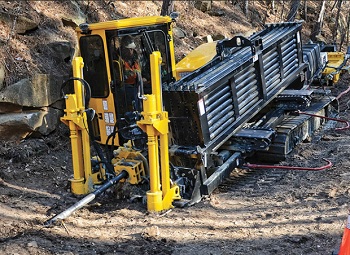
Senate Commission Wants Answers Regarding Exposed Block Island Wind Farm Cables
The Coastal Resources Management Council (CRMC) said its geologist recommended before construction of the offshore wind facility that Deepwater Wind, now owned by Denmark-based Ørsted, bury the two cables 6-8 feet deep using a process known as horizontal directional drilling. Deepwater Wind, however, relied on an independent engineering report that concluded the 12-inch-diameter cable could be buried at a depth of 2-4 feet using a devise called a jet plow. According to CRMC executive director Grover Fugate, CRMC’s governing board relied on the independent report to approve the more shallow depth using the jet plow process. >click to read< 09:14
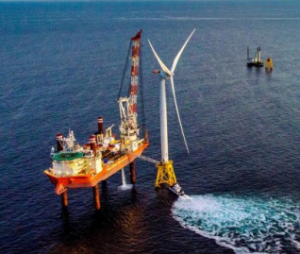
Exposure to pile driving noise associated with construction of docks, piers, offshore wind farms, cause squid to exhibit strong alarm behaviors
“This study is the first to report behavioral effects of pile driving noise on any cephalopod, a group including squid, cuttlefish, and octopuses,” says lead author Ian Jones, a student in the Massachusetts Institute of Technology-Woods Hole Oceanographic Institution Joint Program in Oceanography. Jones and his colleagues in the Sensory Ecology and Bioacoustics Lab at WHOI exposed longfin squid (Doryteuthis pealeii) to pile driving sounds originally recorded near the construction site of the Block Island Wind Farm in Rhode Island. >click to read< 11:52

Offshore Wind Getting Crushed by Carbon Capture
Guest table-turning by David Middleton. Ms. Casey has a BA in philosophy, is a career bureaucrat. and has held several part time jobs with enviro-nitwit websites. Hence, she’s an energy expert. Whatever offshore wind power may or may not do in the future, is irrelevant to the fact that it’s currently only “crushing” the budgets of energy consumers.Offshore Wind vs. Carbon Capture: Who’s Crushing Whom? The US currently has one of each up and running. The energy math is decidedly one-sided. Block Island Wind Farm, The Block Island Wind Farm generates much less energy than an average single Marcellus gas well. In it’s first year of operation the Block Island Wind Farm managed a 39% capacity factor. >click to read< 09:14
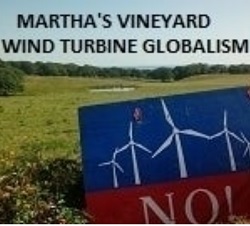
Martha’s Vineyard Wind Turbine Globalism
The first offshore wind farm financial fiasco in the United States was launched off the coast of Rhode Island’s Block Island in 2016. The cost of placing 5 wind turbines was 290 million dollars. The high voltage electric cables cost more than the turbines themselves. Block Island residents were told they would save 40 percent on their electric rates if the turbines were installed.,, never got the rate cut. The first Block Island wind turbine base was crushed during installation and later on start up a brand new gearbox had to be replaced. One out of the five turbines was defective the first day. The failure rate was twenty percent a business plan disaster. >click to read< 21:00
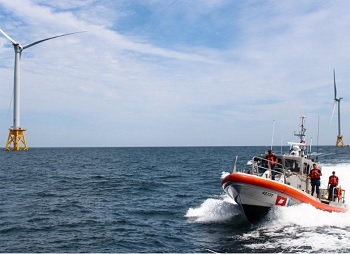
Rescuers hold safety practice at offshore wind farm.
Offshore rescuers are sharpening their skills at and near the Block Island Wind Farm,,, But a Rhode Island commercial fishing group has said practicing on five turbines, all in a row, can’t be considered a real test for what is expected to be hundreds of wind turbines in grid patterns offshore south of Massachusetts and Rhode Island in the coming decade. “It’s not really a farm,” said Richard Fuka of the Rhode Island Fishermens Alliance. The U.S. Coast Guard has completed a case study on the Jan. 1 sinking of the F/V Mistress 3 or 4 miles from the Block Island wind farm to determine if the presence of the five turbines had any impact on the agency’s search and rescue operation. >click to read< 18:09
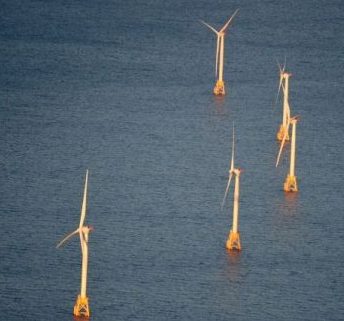
Spacing of Deepwater RI Ocean Wind Turbines Ignored After Deaths
Where is the investigation of what effect the spacing of the Block Island Wind Farm had on the death of two fishermen New Years Eve? On January 1, 2019, New Year’s eve while almost everyone was celebrating the new year drinking, watching parades and fireworks the fishing industry boats were hard a work bringing in their catch. The Mistress a 52-foot fishing trawler in the vicinity of the Block Island wind farm at 1:30 AM took on the water which overtook the engine room. >click to read< 11:12 >click to read< our coverage of the F/V Mistress

Rhode Island Approves Vineyard Wind Project, but, the fishing industry sure don’t like it.
The offer to compensate Rhode Island fishermen harmed by the latest offshore wind project was disliked by just about everyone in the packed auditorium, but the deal was ultimately approved for fear it might slip away. “We’ve been backed into a corner. Is there a way out of it? No,” said Grant Moore, fisherman and president of the Atlantic Offshore Lobstermen’s Association.,, Meghan Lapp from fish processor Seafreeze Ltd. of North Kingstown and Point Judith submitted a petition signed by 170 workers in the commercial fishing industry who oppose the compensation plan. Various video’s, >click to read<13:54

A mighty wind, by Kevin Gray – The more you read, the dirtier it gets.
Jeff Grybowksi likes to tell the story about the whale.,,, For Grybowksi and his surrogates, as well as for the powerful environmental groups blowing wind into his green-energy sails, this is a handy anecdote, one they frequently recycle to journalists and policy makers. In the face of commercial fishermen’s warnings that Deepwater’s wind farms will kill their industry, Grybowksi’s parable portrays the company as a true steward of the environment. At the same time, the story underscores the brinksmanship that has propelled Grybowski’s company from startup obscurity to leading player in the booming domestic offshore wind trade: They are ready to go down to the wire for the sake of their hedge-fund investors.,,, But not everyone out here is impressed by Deepwater’s plans, or by Grybowski, or his whale. >click to read<10:52

Exposed wind farm electric transmission line at Block Island beach causing concern
There is a controversy over a high voltage power line to and from Block Island that’s supposed to be buried. But it’s not. In fact, at low tide on Wednesday, it was just below the waterline at State Beach, which is also known as Crescent Beach and is the most popular on Block Island. You can still see the yellow covering wrapped around the 37,500-volt National Grid powerline that runs the juice generated by the Deepwater Wind turbines through a buried junction box, to the mainland, and the electricity back again to island ratepayers. National Grid released a statement, noting that shifting sediment is the cause for the lines exposure, but added that they are “confident” it’s safe. >click to read<14:02
Cable exposed near shoreline – >click to read<

First U.S. Offshore Wind Developer Acts on Fishing Gear
U.S. offshore wind developer Deepwater Wind has adopted a first-of-its-kind procedure designed to prevent impacts to commercial fishing gear from its activities. Deepwater Wind’s Block Island Wind Farm is America’s first offshore wind farm, and the company is currently in active development on utility-scale wind farms to serve Rhode Island, Connecticut, New York, New Jersey and Maryland. The procedure was developed in close coordination with the commercial fishing industry and is based off extensive feedback from fishermen in ports up and down the Atlantic coast. Deepwater Wind believes that keeping fishermen informed is the key to preventing damage to fishing gear. >click to read<18:19
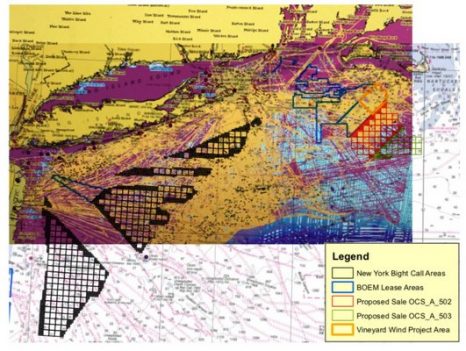
A Divided Community Speaks at Wind Farm Hearing
East Hampton residents crystalized their hopes and fears about Deepwater Wind’s proposed offshore wind farm 36 miles off the coast of Montauk in a three-hour-long public hearing at LTV’s Wainscott studio May 17. Their views highlighted a deepening divide within the community, with many saying the project is a necessary tool in combatting catastrophic climate change, while others worried that the price of the power from the project has not been disclosed, and many said that Rhode Island fishermen whose work was impacted by the company’s Block Island wind farm weren’t fully compensated for their losses, and were asked to sign non-disclosure agreements when they settled their case with the wind power company. >click to read<08:52
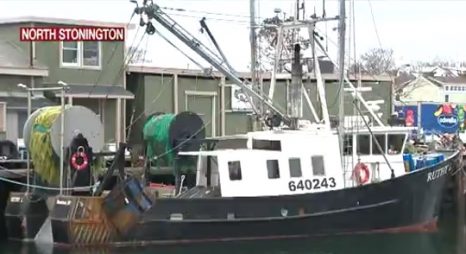
Proposed wind farms off of New London worry local fishermen
Last week, Ørsted and Eversource announced a joint venture and has submitted a bid to build Connecticut’s first offshore wind farm, in response to the state’s request for proposals for offshore wind energy generation. The approximately 200-megawatt project – Constitution Wind – would be the first of its kind to serve the state of Connecticut and would be located in federal waters 65 miles off shore. “That’s the traditional fishing ground where they’re talking about now,” said Stonington Fisherman Bob Guzzo. >click to read<18:56

Opponents say Block Island wind farm is causing problems across prime fishing grounds
The five enormous turbines that have been generating electricity off Block Island over the past year are considered a model for the future of offshore wind. But the nation’s first ocean-based wind farm also has exposed what fishermen say are serious threats to them caused by scattering massive metal shafts and snaking underwater cables across prime fishing grounds.,,, Wind power companies have dismissed most of their concerns, and fishermen have become increasingly frustrated, saying that they’re being ignored.>click to read<09:38

What Does the Jones Act Mean for Offshore Wind?
The Block Island Wind Farm, a 30-megawatt wind farm located just off the coast of Rhode Island, began operations in December 2016, fulfilling the goal of the project’s developer, Deepwater Wind LLC, to build America’s first offshore wind farm. The Block Island Wind Farm consists of only five wind turbines and is tiny in comparison to the large offshore wind farms operating off the coasts of Europe, but Deepwater Wind is planning larger wind farms off the coasts of New York, Massachusetts, Rhode Island, Maryland and New Jersey. Other developers are doing the same with other projects up and down the East Coast of the United States. >click to read< 14:37

In 2018, Thorny Issues Ahead – Fishermen versus wind farm, beach access at Napeague remain unresolved
The proposed South Fork Wind Farm occupied the attention of many residents and governing officials throughout 2017 and, if anything, will be a matter of greater debate next year as its developer, Rhode Island-based Deepwater Wind, submits formal applications to multiple federal, state, and local permitting agencies.,, Most recently, commercial fishermen and Deepwater Wind are at odds over reports by the former that their trawl nets have snagged on the concrete mats that cover approximately 5 percent of the Block Island Wind Farm’s transmission cable. click here to read the story 09:41
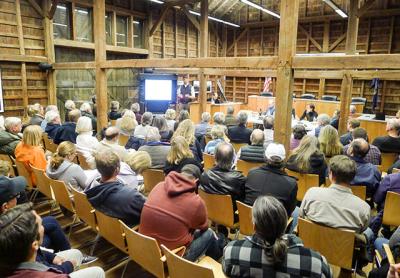
“You’re going into our fishing grounds,” – Fishermen Demand Answers on Wind Power Plan
An effort by Deepwater Wind, the Rhode Island company that plans to construct the South Fork Wind Farm approximately 30 miles east of Montauk, to alleviate the concerns of skeptical fishermen over disruption or destruction of their livelihood took an incremental step forward when the company’s president and vice president of development addressed a standing-room-only crowd at East Hampton Town Hall on Monday. Concerns remain, however, with commercial fishermen demanding to see data that Deepwater Wind has promised but has yet to produce, along with assurances that they will be compensated for losses resulting from construction or operation of the wind farm. click here to read the story 08:08
RI Fishermen, Scientists Study Impact Of Offshore Wind Farm On Fisheries
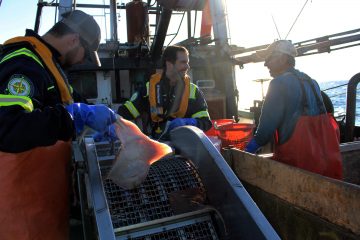 Every month for the past four and a half years, Captain Rodman Sykes has sailed out toward the Block Island Sound with his crew and a small group of scientists. They tow a fish net and scrape the seafloor twice in three different locations: within the area of the Block Island Wind Farm and in areas close to it for reference. “Mostly skates, there’s a sea bass and a few small scup, sea robins, dog fish,” Sykes says aloud as he stands over the fish to inspect them each time his crew brings up the net and releases the catch. “Not much else, but a good sample. So we’ll go on to the next station.” While Sykes redirects his vessel to the next sampling area, scientists get right to work: sorting fish by species, taking their weight, and measuring their length. Together these scientists and fishermen make up the research team hired by Deepwater Wind to collect data to understand the wind farm’s impacts to fish and shellfish. Sykes says at first that didn’t sit well with a small group of fishermen. “I had guys question me about ‘why are you working for the wind farm?’” recalls Sykes. “I told them, ‘I am not working for the wind farm, I am working for the fishing community.’” Read the story here 10:40
Every month for the past four and a half years, Captain Rodman Sykes has sailed out toward the Block Island Sound with his crew and a small group of scientists. They tow a fish net and scrape the seafloor twice in three different locations: within the area of the Block Island Wind Farm and in areas close to it for reference. “Mostly skates, there’s a sea bass and a few small scup, sea robins, dog fish,” Sykes says aloud as he stands over the fish to inspect them each time his crew brings up the net and releases the catch. “Not much else, but a good sample. So we’ll go on to the next station.” While Sykes redirects his vessel to the next sampling area, scientists get right to work: sorting fish by species, taking their weight, and measuring their length. Together these scientists and fishermen make up the research team hired by Deepwater Wind to collect data to understand the wind farm’s impacts to fish and shellfish. Sykes says at first that didn’t sit well with a small group of fishermen. “I had guys question me about ‘why are you working for the wind farm?’” recalls Sykes. “I told them, ‘I am not working for the wind farm, I am working for the fishing community.’” Read the story here 10:40
Black Point Fish Trap to close due to windmill farm cable installation
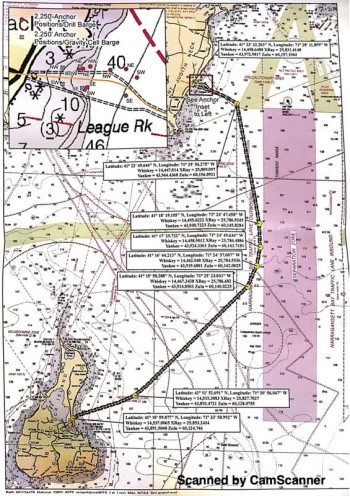 The largest and oldest fish trap in Rhode Island will be closed due to the installation of the undersea transmission cable that will connect the Block Island Wind Farm to the mainland. Rich Fuka, the President of the R.I. Fishermen’s Alliance, returned a phone call from The Block Island Times, confirming the fish trap “will have to suspend operations, which is a very big deal for Rhode Island. It’s our state’s oldest fishery.” Fuka said it was also the largest. The fish trap is located at the mouth of the west passage of Narragansett Bay. The fish trap cannot be moved, both Fuka and Mastrati acknowledged. The fish trap is not a fishery, but rather the location where the floating fish traps are used. Read the rest here 18:20
The largest and oldest fish trap in Rhode Island will be closed due to the installation of the undersea transmission cable that will connect the Block Island Wind Farm to the mainland. Rich Fuka, the President of the R.I. Fishermen’s Alliance, returned a phone call from The Block Island Times, confirming the fish trap “will have to suspend operations, which is a very big deal for Rhode Island. It’s our state’s oldest fishery.” Fuka said it was also the largest. The fish trap is located at the mouth of the west passage of Narragansett Bay. The fish trap cannot be moved, both Fuka and Mastrati acknowledged. The fish trap is not a fishery, but rather the location where the floating fish traps are used. Read the rest here 18:20
Deepwater Wind Opponents of RI Wind Farm Head to Court
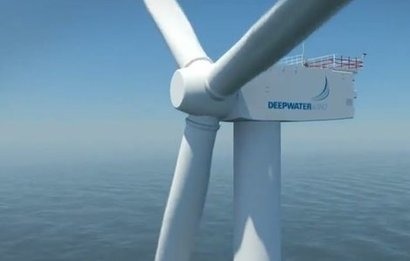 The first off-shore wind farm in the United States will have Rhode Islanders footing the bill at $497 million above market cost, taxpayers claim in Federal Court. The Aug. 14 lawsuit comes less than a month after Deepwater Wind touted the installation of its first foundation component for the Block Island Wind Farm. With construction “now imminent,” plaintiffs Benjamin Riggs and Laurence Ehrhardt say a federal judge must enjoin Deepwater’s power-purchase agreement with Narragansett Electric Co., more commonly known as National Grid. Read the rest here 14:09
The first off-shore wind farm in the United States will have Rhode Islanders footing the bill at $497 million above market cost, taxpayers claim in Federal Court. The Aug. 14 lawsuit comes less than a month after Deepwater Wind touted the installation of its first foundation component for the Block Island Wind Farm. With construction “now imminent,” plaintiffs Benjamin Riggs and Laurence Ehrhardt say a federal judge must enjoin Deepwater’s power-purchase agreement with Narragansett Electric Co., more commonly known as National Grid. Read the rest here 14:09






